One of the most frequently asked questions is “Can You See Saturn With A Telescope?”
The short answer is yes! However, there are a few things to keep in mind for seeing Saturn through a telescope. Amateur astronomers know that the best time to view Saturn is during its opposition when it is at its closest approach to Earth and brightest in the night sky. Saturn is very far away, so you’ll need a telescope with at least an 8-inch mirror (or lens) to get a good view of the planet. Let’s look into more details.
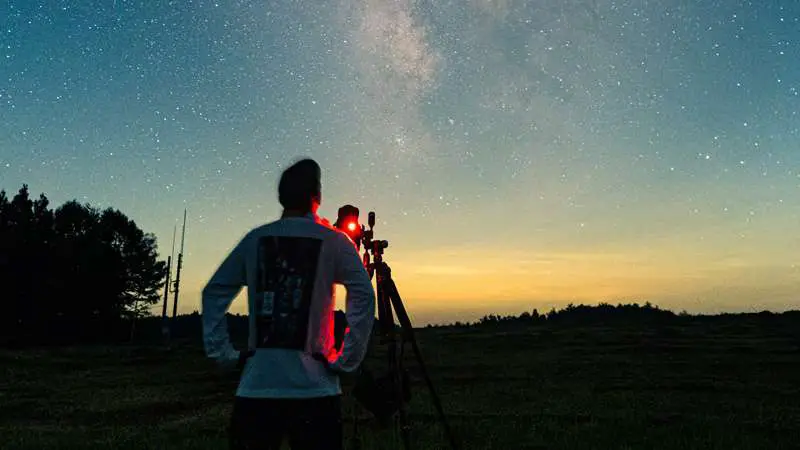
We live in a vast, vast universe. And while we are limited to what we can see with our naked eyes (or binoculars), there are still many wonders of the world that we can explore – and may not know about yet!
In this article, I’ll answer the question “Can You See Saturn With A Telescope?” with 9 facts about Saturn as well as telescope requirements – including details about telescope parts.
In this article, you get
11 tricks to find Saturn through telescope
9 facts about Saturn that will blow your mind
11 tips & tricks to see Saturn from telescope
Saturn telescope images
And much much more!
By the end of this article, you’ll have all the info you need to know how to see Saturn with a telescope.
Let’s dive right in.
CAN YOU SEE SATURN THROUGH A TELESCOPE?
If you’ve ever looked up at the night sky and seen celestial objects, you might have wondered if you could see Saturn with a backyard telescope.
The answer is yes, but it’s best to keep the following things in mind for viewing Saturn through a telescope.
- Although Saturn is bright, it is still very far away. It is, after all, one of the 4 outer planets (Jupiter, Saturn, Uranus, and Neptune) and it’s the sixth planet from the Sun. This means that even larger telescopes will only show Saturn as a small dot in the sky. You’ll need a good telescope to see Saturn.
- Because Saturn is so far away, it appears very small in the night sky to the unaided eye. This means that you’ll need a small telescope with at least an 8-inch mirror or lens to get a better view of the planet. This is referred to as an 8-inch telescope (200 mm telescope).
- Keep in mind that although Saturn is visible with a smaller telescope, it can be difficult to see all of its features. It’s best to have a high-magnification eyepiece, or use a Barlow lens to magnify the image.
WHAT DOES SATURN LOOK LIKE THROUGH A TELESCOPE?
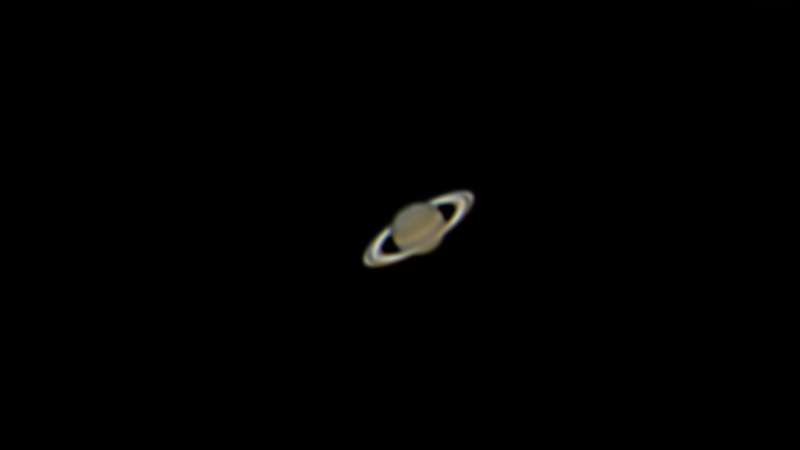
Amateur astronomers know that the best time to view Saturn is during its opposition when it is at its closest approach to Earth and brightest in the night sky. However, even during opposition, you might need to use special filters or techniques to see all of Saturn’s rings or its largest moon, Titan.
WHAT IS SATURN?
Saturn is the 6th planet from the Sun and the second largest in our solar system. It’s best known for its beautiful rings, which are made up of ice and rock particles. Saturn is also home to several moons, including the large moon Titan.
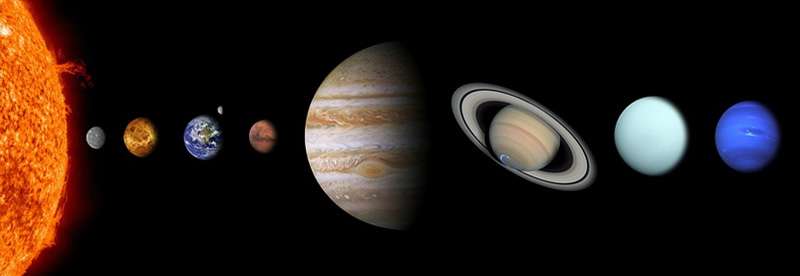
If you’re looking for a challenge, try to find Saturn in the night sky. It’s not as easy as finding Venus or Mars, but the good news it is possible to see with the naked eye if you know where to look.
Pro Tip
If you want to try to find Saturn on your own, look for the constellation Sagittarius in late summer or early fall. Once you find Sagittarius, look for the brightest star that doesn’t twinkle as other stars do. That bright star is actually Saturn!
The best views of Saturn are when it is its closest point to Earth. This happens every few years and is referred to as Saturn’s opposition.
In other words, when Earth is directly in between the Sun and Saturn, or when Saturn is directly opposite the Sun from Earth. Even when it’s not at its closest, though, Saturn is still bright enough to be seen with a simple telescope.
WHAT IS THE CASSINI DIVISION?
The Cassini division is a gap in Saturn’s rings that was discovered by Italian astronomer Giovanni Domenico Cassini in 1675.
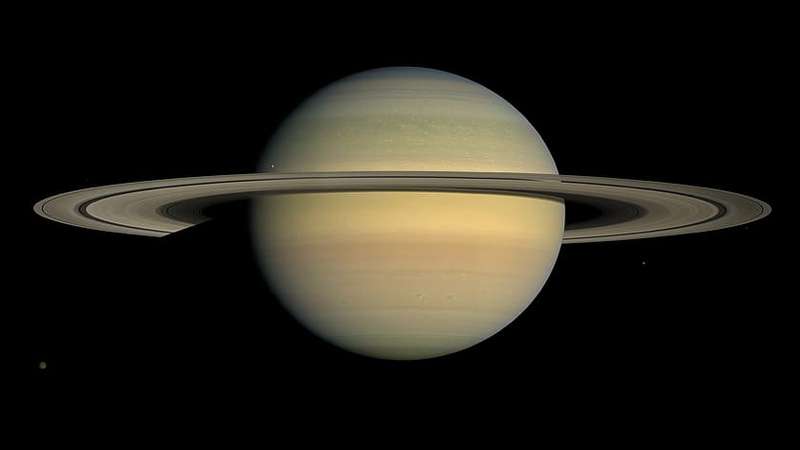
It is about 4,800 kilometers (3,000 miles) wide and is located between the A ring and the B ring. The Cassini division is empty of particles because of the gravitational influence of Saturn’s moons Janus and Epimetheus, which orbit just outside it.
WHEN CAN YOU SEE SATURN WITH A TELESCOPE?
The best time to see Saturn from a telescope is during the summer months in the Northern Hemisphere. The planet will be visible in the sky for a few hours after sunset and can be seen with the naked eye. However, you will need a telescope for the best view of Saturn and Saturn’s ring system.
HOW TO FIND SATURN IN TELESCOPE: 11 TRICKS THAT WORK
If you want a telescope view of Saturn, there are a few things you can do to make your first time easier. Here are 11 tips:
- Use a finder scope or red dot sight to help locate Saturn in a telescope
- Look for Saturn in the early evening, when it is at its highest point in the sky
- Use binoculars or a low-power telescope to find Saturn and then switch to a higher-power telescope to see the rings
- Look for Saturn in dark skies away from city lights
- Use the line of sight method: Draw an imaginary line from Mars through Jupiter and extend it 5 times farther out to find Saturn
- Look for Saturn near the crescent Moon: they will be close together in the sky
- Use Star charts or planetarium software to help find where Saturn is currently located in the night sky
- Try using different eyepieces in your telescope to get a higher magnification and a better level of detail. Basically, try some small modifications to your telescope to see Saturn rings clearly.
- Take advantage of good weather conditions and stable atmospheric conditions for the clearest views possible
- Adjust your telescope’s focus until Saturn appears as a small, round disk with rings that appear as faint lines on either side
- Keep practicing! The more you try, the easier it will become to spot Saturn in the night sky

9 FACTS ABOUT SATURN THAT WILL BLOW YOUR MIND
- Saturn is the second largest planet in our solar system
- It’s huge: the diameter of Saturn is almost 120,000 kilometers
- Saturn is so big that it could fit more than 1,300 Earths inside of it
- Saturn’s atmosphere is made up of hydrogen and helium gas
- The temperature on Saturn can range from -178 degrees Celsius to -108 degrees Celsius
- On Saturn’s moon, Titan, the temperature can get as low as -290 degrees Celsius
- There are over 60 moons orbiting Saturn! The largest moon is called Titan and it’s bigger than Mercury
- The rings of Saturn are made up of ice and dust particles. Some of the particles are as small as a grain of sand while others are as big as a house!
- Saturn takes 29 Earth years to orbit around the sun once!
HOW BIG IS THE PLANET SATURN?
Saturn is the second-largest planet in our solar system, after Jupiter. It’s huge! The diameter of Saturn is almost 120,000 kilometers. That’s almost 10 times the diameter of Earth. And if you could put Saturn and Earth side-by-side, Saturn would be almost twice as big as Earth.
WHY DO THEY CALL IT THE RINGED GAS GIANT?
The term “gas giant” was first coined in 1952 by science fiction writer James Blish and was popularized by Isaac Asimov in his 1956 novel The Stars, Like Dust.
At that time, the composition of the solar system’s planets was not well known, and gas giants were thought to be composed primarily of hydrogen and helium.
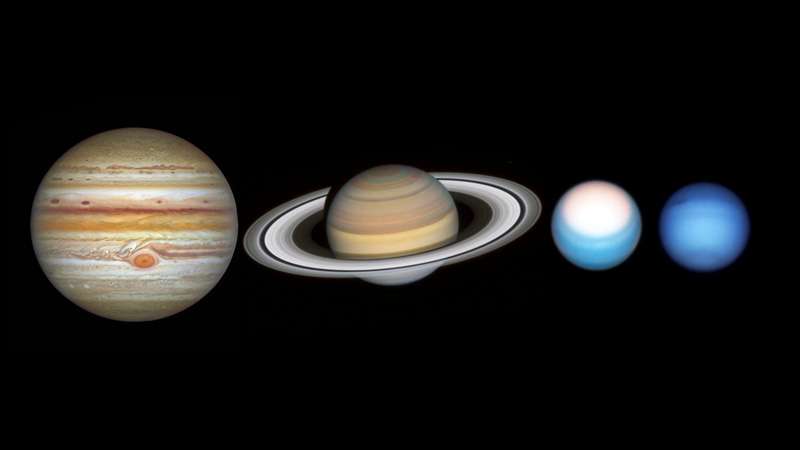
Today, we know that gas giants are mostly made up of hydrogen and helium.
They also contain heavier elements like carbon, nitrogen, and oxygen. These elements are thought to have condensed out of the nebula that formed our solar system.
The large size of the gas giants is due to their low density. While Earth has a density of 5.5 grams per cubic centimeter, Saturn’s density is only 0.687 grams per cubic centimeter. This means that Saturn is much less massive than Earth despite being much larger in diameter.
The low density of the gas giants can be explained by their large cores of heavy elements surrounded by layers of lighter gases like hydrogen and helium. The pressure inside the core is so high that the heavy elements are compressed into a liquid state.
This explains why Saturn’s interior is mostly fluid despite being very cold (-178 degrees Celsius).
SATURN’S MOONS: TITAN, ENCELADUS, MIMAS, DIONE, RHEA, AND IAPETUS
With a telescope, you can see six moons of Saturn: Titan, Enceladus, Mimas, Dione, Rhea, and Iapetus.
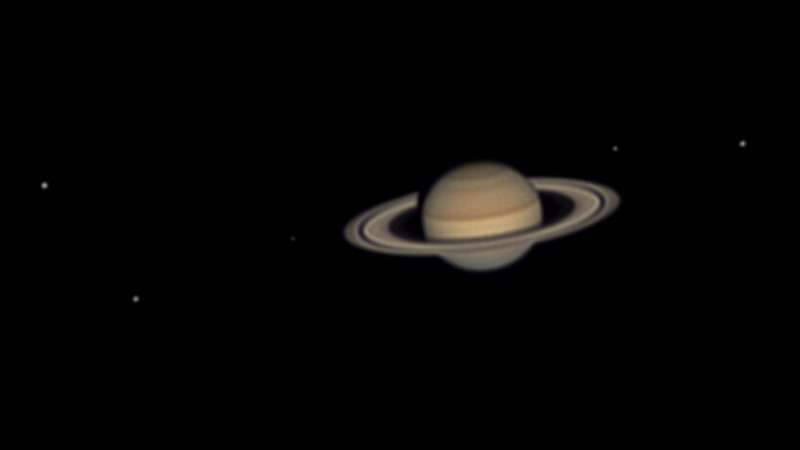
- Titan is Saturn’s largest moon and the second-largest moon in the solar system. It is larger than the planet Mercury. Titan has a thick atmosphere that is mostly nitrogen with some methane.
- Enceladus is a small moon that is mostly covered in ice. It has geysers that shoot water vapor and ice particles out into space.
- Mimas has a huge crater on its surface that makes it look like the Death Star from Star Wars.
- Dione has an old craters on its surface. It is also covered in ice.
- Rhea is another icy moon with craters on its surface. It is the second largest moon of Saturn.
- Iapetus is unusual because one side of the moon is very bright and the other side is very dark.
ALTERNATIVE NAMES FOR THE PLANET SATURN
The planet Saturn has many alternative names that come from various cultures.
In Roman mythology, Saturn is the god of agriculture. The planet was named after him because it is the farthest planet from the Sun that can be seen with the naked eye. The name “Saturn” comes from the Latin word for “sowing,” which is a reference to the god’s agricultural role.
In Greek mythology, Saturn is known as Cronus, the father of Zeus. He was overthrown by his son and banished to Rome, where he ruled as the god of agriculture. The planet was named after him because it is the farthest planet from the Sun that can be seen with the naked eye.
The Sumerians knew Saturn as Nergal, their god of war and destruction. The Babylonians called him Marduk, their national deity.
The Assyrians called him Assur, their god of war and hunting.
The Hittites knew him as Teshub, their storm god.
These cultures all associated Saturn with strength, power, and aggression because it is the farthest planet from the Sun and appears very bright in the night sky.
TELESCOPES AND HOW THEY WORK
Telescopes are one of the most essential tools for astronomers.
They allow us to see things that are too far away for our eyesight, and they also help us to see things that are very faint.
If you’re brand new to the world of telescopes, then I would encourage you to read my articles What is a Newtonian Telescope?, Refractor Telescope vs Reflector, and Dobsonian telescope vs Newtonian.

There are two main types of telescopes: refracting telescopes and reflecting telescopes.
- Refracting telescopes use lenses to gather light while reflecting telescopes use mirrors. Both types of telescopes can be used to see Saturn.
- Reflecting telescopes are usually larger than refracting telescopes, but they can gather more light because they have a larger aperture (the diameter of the lens or mirror). This means that they can provide a better image of Saturn.
If you want to see Saturn with a small scope, you will need to find it in the night sky first.
It is easiest to find Saturn when it is in opposition, which means that it is directly opposite the Sun in the sky. Opposition occurs every year in late April/early May and late July/early August.
Once you have found Saturn in the night sky, you can start observing it with your telescope.
If you have a small amateur telescope, you might only be able to see Saturn’s largest moon, Titan. However, if you have a larger telescope, you might be able to see some of Saturn’s other moons as well as its rings.
THE PARTS OF A TELESCOPE
A telescope is made up of three main parts: the objective lens, the eyepiece, and the mount.
- The objective lens is the large lens at the front of the telescope. It gathers light from the object you are observing and focuses it into the eyepiece.
- The eyepiece is a small lens that magnifies the image that is focused by the objective lens.
- The mount is what holds the telescope in place so you can point it at different objects in the sky. Read my articles Types of Telescope Mounts and Equatorial Telescope Mount vs AltAzimuth.
HOW TO FIND SATURN WITH A TELESCOPE
Assuming you have a telescope and know how to set it up, finding Saturn is not too difficult.
The first step is to find a star chart or planetarium app that will show you the current night sky. Once you have located Saturn on the chart, point your telescope in that general direction.
You may need to adjust the focus of your telescope to see Saturn clearly.
If you see a bright object that looks like a star with a “ring” around it, congratulations! You’ve found Saturn!
WHAT TO WATCH OUT FOR WHEN USING A TELESCOPE
There are a few things to keep in mind when using a telescope to view Saturn.
- The planet will appear small in the telescope’s field of view.
- Because Saturn is so bright, it can be difficult to see the planet’s features.
- Remember that the rings of Saturn will appear edge-on when the planet is at its farthest from Earth.
HOW TO CHOOSE THE BEST TELESCOPE TO SEE SATURN RINGS
There are a few things to consider when choosing the right size telescope for viewing Saturn.
- The most important is the telescope’s aperture or the diameter of its main mirror or lens. The larger the aperture, the more light the telescope can gather and the better the image will be.
- Another factor to consider is the telescope’s focal length, which is the distance from the main mirror or lens to the eyepiece. A longer focal length means that the image will be magnified more, but it will also be dimmer. Focal Length / Aperture = Focal Ratio. Read my article on choosing the best Focal Ratio.
- Lastly, you’ll want to decide on an appropriate mount for your telescope. A Dobsonian mount is a good choice for beginners, while more experienced observers might prefer an equatorial mount.
Once you’ve decided on the perfect telescope for your needs, it’s time to start enjoying some amazing views of Saturn!
11 TIPS & TRICKS TO USE YOUR TELESCOPE EFFECTIVELY
If you’re new to using a telescope, it can be tricky to get the hang of it. But with a little practice, you’ll be able to use your telescope effectively in no time. Here are some tips and tricks to help you out:
- Don’t be afraid to experiment. There’s no one right way to use a telescope. So play around with it and see what works best for you.
- Start by finding an easy target like the Moon or a bright planet like Jupiter or Saturn. Once you’ve got the hang of finding things in your telescope, you can move on to fainter objects.
- Use the lowest power eyepiece that gives you a clear view of your target. Higher power eyepieces will make things look bigger, but they’ll also make them blurrier.
- Be patient! It takes time to get used to using a telescope. Don’t get frustrated if things don’t look perfect at first. Just keep practicing and you’ll eventually get the hang of it.
- If your telescope has a finder scope, use it to help you aim the telescope at your target. You can track the International Space Station across the sky.
- Once you’ve found an object in your telescope, try using different eyepieces to see it at a different x magnification.
- If an object looks blurry, try adjusting the focus until it looks clear.
- Be sure to keep your telescope clean. Dust and dirt on the lenses can make things look blurry.
- Take breaks often when stargazing. Your eyes will get tired if you stare at the telescope for too long.
- If you’re having trouble seeing an object, try moving the telescope around slightly until it comes into view.
- Remember to have fun! Stargazing is a great hobby and there’s a lot to see out there. Explore the night sky and see what you can find.
3 IMPORTANT TIPS FOR BEGINNERS
There are a few important things beginners should keep in mind when using a telescope to view Saturn.
- Always use a tripod or some other form of support to prevent the telescope from moving.
- Make sure the eyepiece is securely fastened before looking through the telescope.
- Be patient and give your eyes time to adjust to the darkness.
Don’t be discouraged if you don’t see Saturn right away; it may take some time to find it in the night sky.
You may also want to read up on image orientation. Read my article Why is my telescope upside down?
WHAT IS THE BEST TELESCOPE FOR YOU?
Earlier in this article, I said there were two main types of telescopes. Now, I’d like to introduce you to a 3rd type. Depending on your needs, it may be the best telescope for you.
- Refractor telescopes use lenses to bend light and form an image. They are typically small and portable, making them a good choice for beginners. However, they are also the most expensive type of telescope.
- Reflector telescopes use mirrors to bounce light and form an image. A Reflector is considered a large telescope but they are also less expensive. Reflectors can be tricky to set up, so they may not be the best choice for beginners.
- Catadioptric telescopes use a combination of lenses and mirrors to bend and reflect light. They are usually more expensive than reflectors, but they are also easier to set up and use. Catadioptrics offer the best of both worlds, making them a good choice for intermediate and advanced users.
ATMOSPHERIC CONDITIONS
Atmospheric conditions play a big role in how well you can see Saturn with a telescope.
If the atmosphere is stable, you’ll be able to see the planet’s rings more clearly. This is known as having “good seeing”. However, if the atmosphere is unstable, it can cause the image of Saturn to appear fuzzy.
You will definitely want to choose the right time when you have clear skies for the best chance to the most detail.

Light pollution also plays an important part in your ability to see Saturn better.
When choosing a location to view Saturn, be sure to avoid areas that are near bright lights. This includes streetlights, porch lights, and even car headlights. The glare from these lights can make it difficult to see the planet and its rings clearly.
It’s best to find an area away from city lights where you can see the night sky clearly. Parks or open fields are good choices. The easiest way to see what’s best near you is to look at a light pollution map.
If you live in an area with a lot of light pollution, you may want to consider traveling to a darker location. There are many dark sky parks across the United States that offer excellent views of the night sky.
FREQUENTLY ASKED QUESTIONS
HOW BIG OF A TELESCOPE DO I NEED TO SEE SATURN?
The best telescope for viewing Saturn is any small one with a 50mm aperture and modest power. This will be enough to show you the rings and the planet’s most prominent moon, Titan.
CAN YOU ALWAYS SEE SATURN WITH TELESCOPE?
You can never see Saturn quite as well as you would like to with a telescope. Once you have it in view, make sure to put a low-power eyepiece in your telescope. At 50-60x magnification, you will be able to see the rings and Saturn’s disk.
CAN THE HUMAN EYE SEE SATURN’S RINGS?
Although the rings increase the brightness of Saturn, you can’t see them with your naked eye. Galileo Galilei saw the rings in 1610 using his telescope and called them “ears.”
can you see saturn’s rings with binoculars?
Yes, you can see Saturn’s rings with binoculars. Saturn is one of the most recognizable planets in the night sky, and even a small pair of binoculars will reveal its stunning ring system as a narrow, flat disk surrounding the planet. With binoculars, you can also observe some of Saturn’s larger moons, such as Titan, which appears as a tiny dot of light near the planet. For a more detailed view of Saturn and its rings, I recommend a telescope with higher magnification.
Summary: can you see saturn with a telescope?
Thank you for reading my article “Can you see Saturn with a Telescope?”
With a little bit of know-how, you can easily see the ringed planet Saturn with a telescope.
By following my simple tips, you’ll be able to get a great view of the planet and all of its rings. And who knows? Once you’ve gotten a good look at Saturn, you might just be inspired to explore more of the night sky.
If you’re having a hard time, my advice would be the reach out to your local astronomy club. They can help you capture the best images of Saturn, celestial bodies, and other deep sky objects.
For more general info, you can read my article Can You See Planets With A Telescope? And for some fun read my article DIY Solar Filter Telescope.
For a completely different planet, read my article Can You See Mars With A Telescope? Or for info on Jupiter, read my article How To Find Jupiter With a Telescope.




